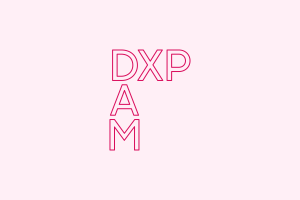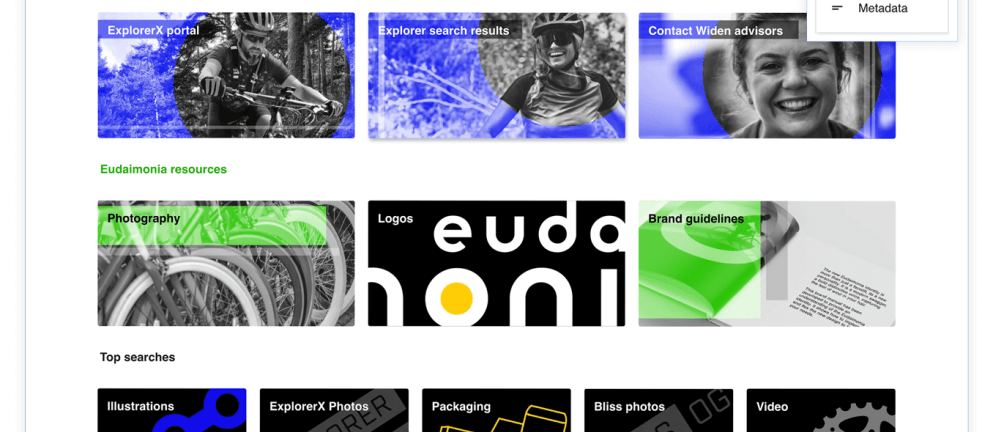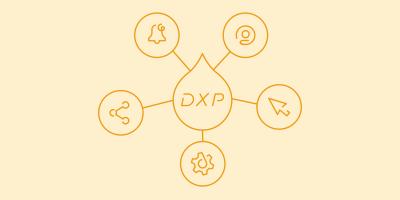
Collection
Make DAM Part of Your DXP

Collection :
The demand for impeccable customer experiences across all channels continues to grow. Your organization needs to deliver the right experience to the right person at the right time — all while sounding human. It’s a monumental task considering the technological and data science challenges behind it, but it can be done. When you combine a digital asset management (DAM) platform with a digital experience platform (DXP), you can start to win customers over one personalized moment at a time.
Almost every step of the digital customer journey is content-driven — no matter the channel. While a DXP orchestrates the intricacies of your omnichannel campaigns, it still needs a highly organized and agile location from which to pull relevant content. That’s where a DAM system comes in.
Here’s why combining DAM and DXP is a winning strategy to simplify and scale your digital customer experiences.
The importance of DXP
A DXP gives your marketing team the power to connect customer data across all touchpoints to inform the next experience the consumer has in real-time. Here’s an example. Let’s say a customer opens an email for your semiannual sale on their laptop, but they close it without clicking through and didn’t see the best discounts offered. Later that day, when they use their smartphone to access your website, configurations in your DXP can send them directly to the semiannual sale page with the best deals at the top.
Your DXP gives you direct control of the customer journey from integrated tools. Here, you design every important interaction a customer might have from discovery to purchase and beyond. For example, you can set up targeted emails that are triggered by certain behaviors by specific customer segments. The combinations of devices, channels, behaviors, and content delivery available for building digital experiences are practically endless with a DXP.
Let’s explore the benefits you can expect when using a digital experience platform:
- An integrated approach to data and content for smarter budget allocation, more informed campaign optimization, and faster decision-making
- Smarter personalization through machine learning and cross-channel insights into customer characteristics, preferences, content consumption, and more
- An open-architecture solution for customizable and easy integration of existing and new cutting-edge marketing tools
- Turnkey content creation methods for more agile digital marketing and less reliance on web developers
- A 360° view of the customer to effectively cleanse, manage, and operationalize online and offline data
- Governance controls to keep content on-brand, protect customer privacy, and mitigate risk
To realize all these benefits, you need a DXP with the right combination of components that break down technology silos.
Common components of a digital experience platform
Technology is typically mentioned as one of the biggest limiting factors for brands that want to improve their digital experiences. They’re either stuck with legacy solutions that can’t keep up with today’s growing demands, can’t get their systems to integrate, or don’t know the right combination of tools to use. Luckily, a DXP houses technologies that work together to design, build, and deliver memorable customer experiences.
Many platforms bring e-commerce, campaign management, digital asset management (DAM), customer relationship management (CRM), customer data platforms (CDP), and personalization tools into one place. Here are common capabilities you should expect from your DXP:
- Enable the quick development of websites, portals, landing pages, and apps
- Collect and connect customer data across touchpoints and content using APIs
- Use data to personalize digital content for customers
- Measure campaign performance and user experience through analytics
The right combination gives your marketing teams speed, agility, and confidence. Though with so many tools out there, coming up with that combination can be a little daunting. Building the right DXP for your business takes time and consideration to suss out which tools you need most. One we highly recommend is a DAM solution.
DAM: The missing piece of your digital experience strategy
No digital experience can exist without content. You could design a brilliant customer journey in a DXP, but without a DAM system to manage, deliver, and track content, your design suffers. A DAM platform isn’t just a nice-to-have component of a DXP; it’s a necessity.
Making a DAM system a foundational tool in your DXP helps deliver your brand's content across all channels. It connects your content across the tools in your DXP, streamlining workflows and increasing quality control. With a DAM solution, you ensure that customers only ever see up-to-date, approved, and on-brand assets.

Benefits you’ll experience by incorporating DAM into your DXP include:
- Enable content search and access within the DXP
- Help teams move faster and streamline workflows
- Ensure brand consistency
- On-the-fly conversions and easy file resizing
- Publish only approved content
- Monitor content performance
- Reuse and repurpose content
- Automate manual processes
- Launch digital experiences faster
The core components of DXP are focused on enabling multichannel experiences built for customer data and platform orchestration. When you add DAM to your DXP, you get powerful, content-specific features and empower your teams to be self-sufficient with functionalities like dynamic resizing tools to adjust the images they pull from the DAM system, converting file formats on the fly, metadata imports for search engine optimization (SEO), and much more.
Getting started with DAM and DXP
Customers expect relevant digital experiences and customer journeys that are meaningful at every step. But saying that is one thing; executing it is another. Fortunately, when you bring DXP and DAM together, you can create complex, elegant, content-driven customer experiences that strengthen your brand and build customer loyalty.
To learn more about creating rich experiences faster by combining DAM with your DXP, download our free e-book. And if you’re ready to see how our solutions can help, request, watch, or click through a demo today.


